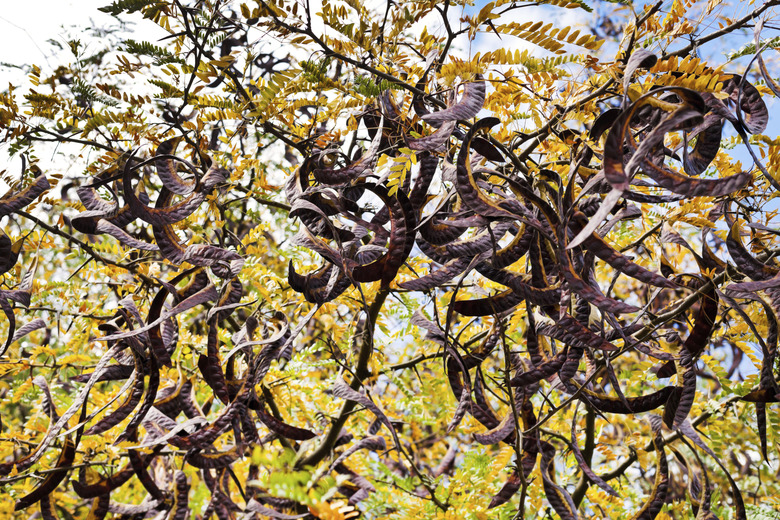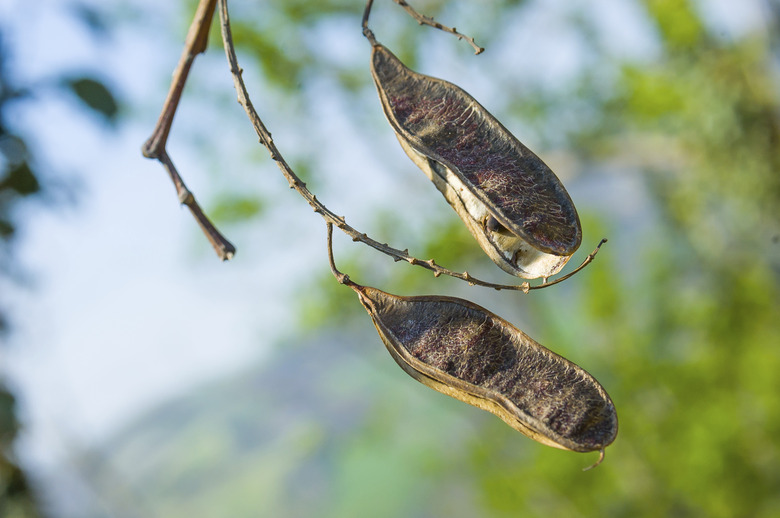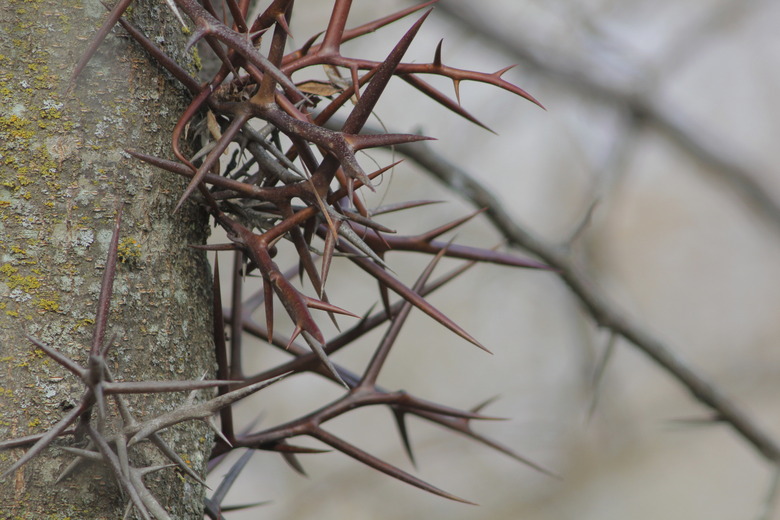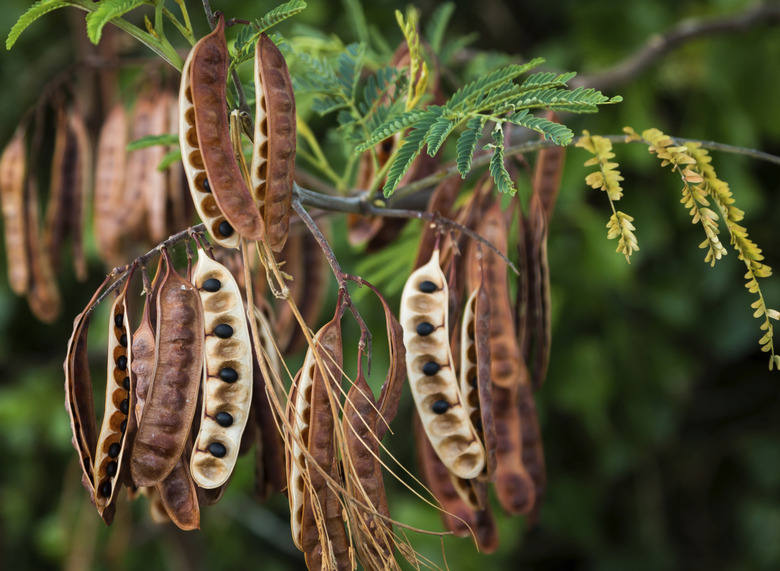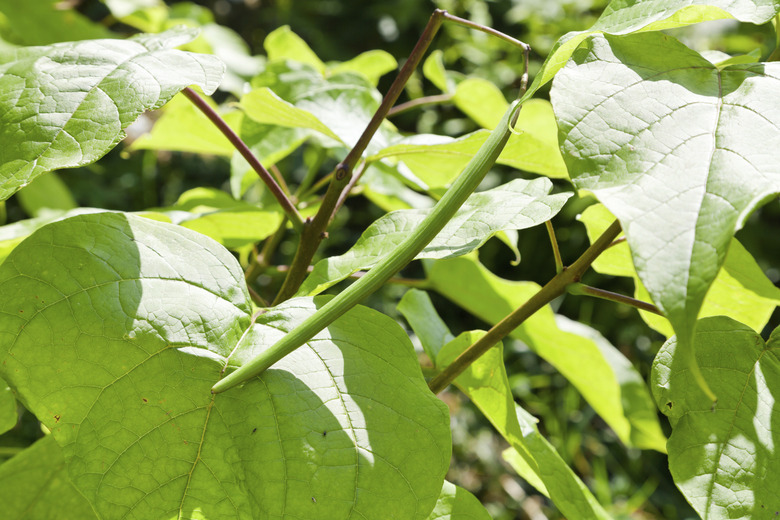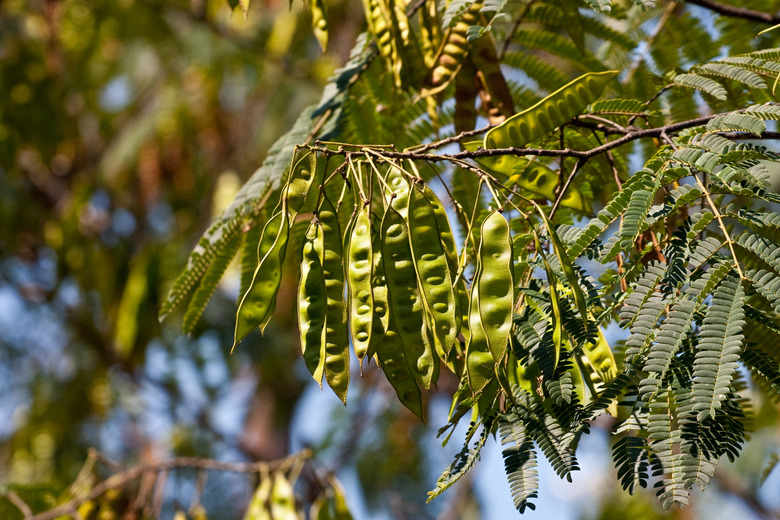Tree Seeds That Look Like A Flat Banana
Though trees are usually identified by their size, bark, and leaves, seed pods are another option for determining tree species. Flat, curved seed pods that resemble a flat banana are fairly distinctive, but they may actually belong to one of several kinds of trees. The color and size of the seed pod will help distinguish between possible species.
Leguminous Trees
Leguminous trees belong to the Fabaceae (or Leguminosae) family, and produce bean-pod like fruit that sometimes resemble banana-shaped pods. Plant legumes like peas, lentils and peanuts are well-known, but trees also produce these pods, though not all varieties are edible. The pods range in shape from the spiraling pods of the mesquite, varieties of which grow in U.S. Department of Agriculture plant hardiness zones 6 to 11, to the flatter, more banana-like variety. With over 18,000 plant varieties in the leguminous category, identification can be tedious, but some varieties are more common than others.
- Though trees are usually identified by their size, bark, and leaves, seed pods are another option for determining tree species.
- Plant legumes like peas, lentils and peanuts are well-known, but trees also produce these pods, though not all varieties are edible.
Honey Locust
Pods that are between 8 to 18 inches in length with reddish to brownish-red coloration are likely honey locust (Gleditsia triacanthos) seed pods. Honey locust pods are curved like a banana but have one wavy edge; each pod can hold between 10 to 20 seeds. The tree is hardy in USDA zones 3 through 9, and is a preferred tree for urban areas due to its fast growth and shading capabilities. Honey locust trees can grow to 70 feet.
Mimosa
Small, tan- or straw-colored pods that aren't much larger than 6 inches may belong to a mimosa tree (Albizia julibrissin). Hardy in USDA zones 6 to 10, mimosa trees range from 20 to 40 feet and produce feathery, fan-like pink to purple flowers. The small banana-shaped pods of the mimosa tree are present year-round. The tree is a desirable ornamental because it offers a tropical look in cooler climates.
- Pods that are between 8 to 18 inches in length with reddish to brownish-red coloration are likely honey locust (Gleditsia triacanthos) seed pods.
- Hardy in USDA zones 6 to 10, mimosa trees range from 20 to 40 feet and produce feathery, fan-like pink to purple flowers.
Catalpa
Catalpa trees (Catalpa speciosa) are sometimes referred to as cigar trees, a reference to the long, thin seed pods that bear the trees' fruit. Catalpa pods can grow particularly long, up to 24 inches, and range in color from green during the spring season to brown as colder weather sets in. The texture of the pods is papery or flaky, and they usually remain on the tree throughout the winter. Hardy in USDA zones 3 through 8, the catalpa is a preferred medium-sized ornamental tree due to its pest resistance and attractive, white trumpet flowers.
More Identification Strategies
With over 18,000 varieties of leguminous trees that produce pods, you may need additional help identifying your tree. Your location, the tree size, bark color and leaf shape may also be helpful in identifying the tree, as will online resources to tree identification such as that offered by the Arbor Day Foundation.
